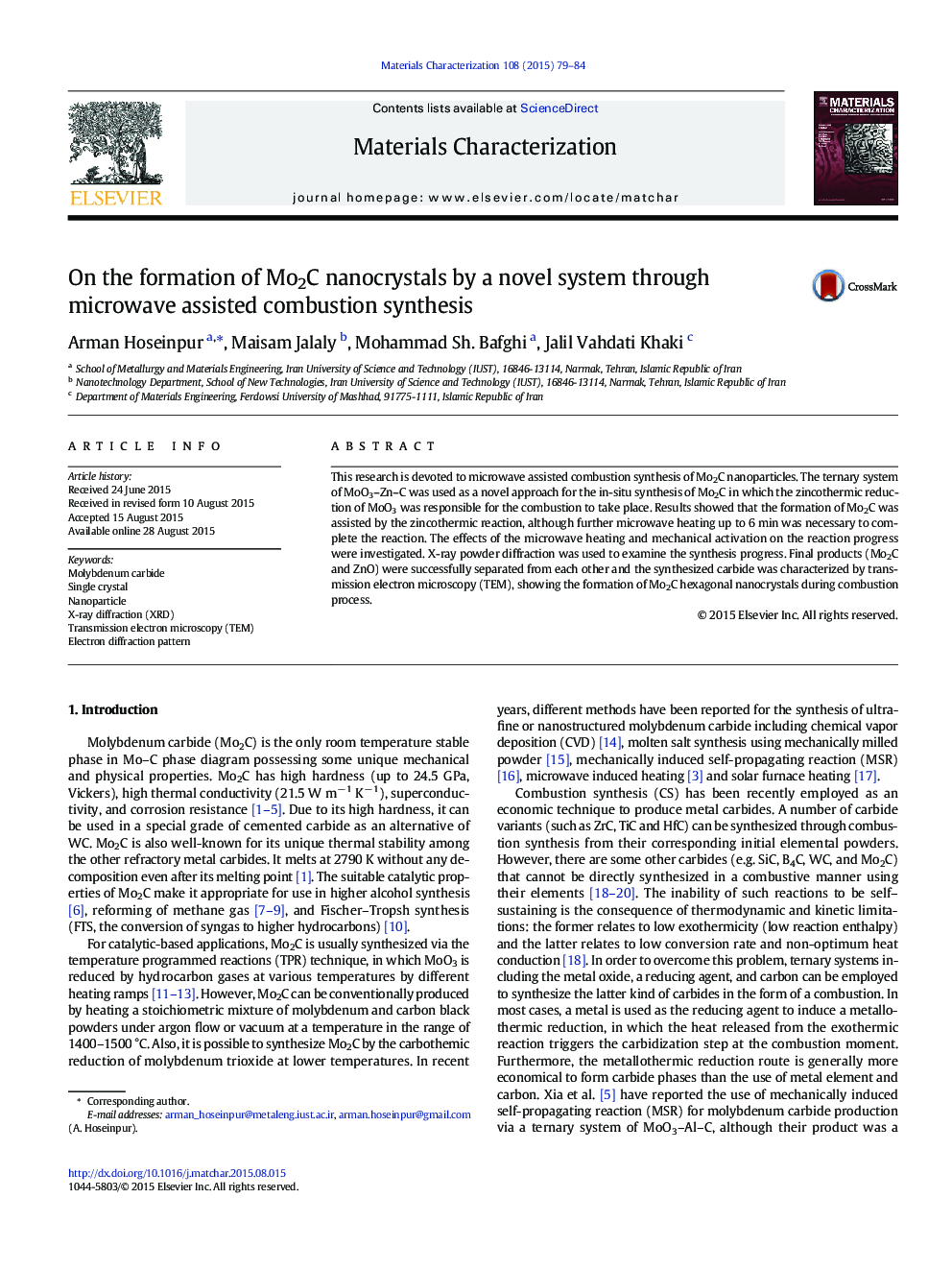| Article ID | Journal | Published Year | Pages | File Type |
|---|---|---|---|---|
| 1570804 | Materials Characterization | 2015 | 6 Pages |
•Hexagonal β-Mo2C nanocrystals were successfully synthesized.•MoO3–Zn–C powder mixture was selected as the initial mixture for the in-situ synthesis of Mo2C.•30 min of mechanical activation was necessary for the carbide formation to be completed.•The zincothermic reduction of MoO3 by Zn was responsible for the combustion.•The final products included of Mo2C and ZnO in which ZnO was removed by acid leaching.
This research is devoted to microwave assisted combustion synthesis of Mo2C nanoparticles. The ternary system of MoO3–Zn–C was used as a novel approach for the in-situ synthesis of Mo2C in which the zincothermic reduction of MoO3 was responsible for the combustion to take place. Results showed that the formation of Mo2C was assisted by the zincothermic reaction, although further microwave heating up to 6 min was necessary to complete the reaction. The effects of the microwave heating and mechanical activation on the reaction progress were investigated. X-ray powder diffraction was used to examine the synthesis progress. Final products (Mo2C and ZnO) were successfully separated from each other and the synthesized carbide was characterized by transmission electron microscopy (TEM), showing the formation of Mo2C hexagonal nanocrystals during combustion process.
Graphical abstractFigure optionsDownload full-size imageDownload as PowerPoint slide
